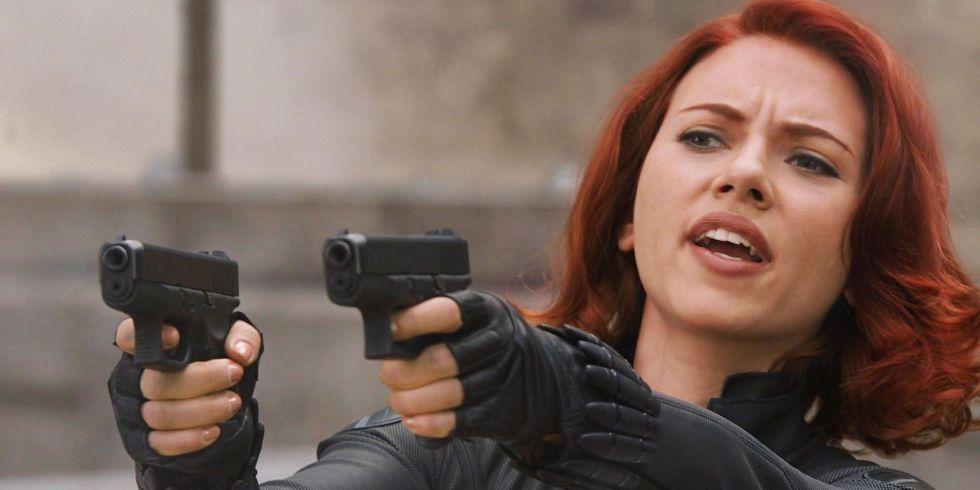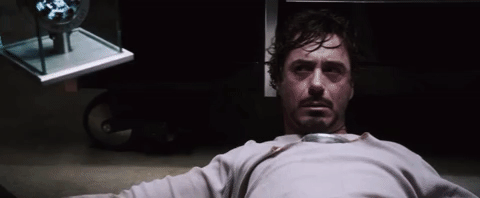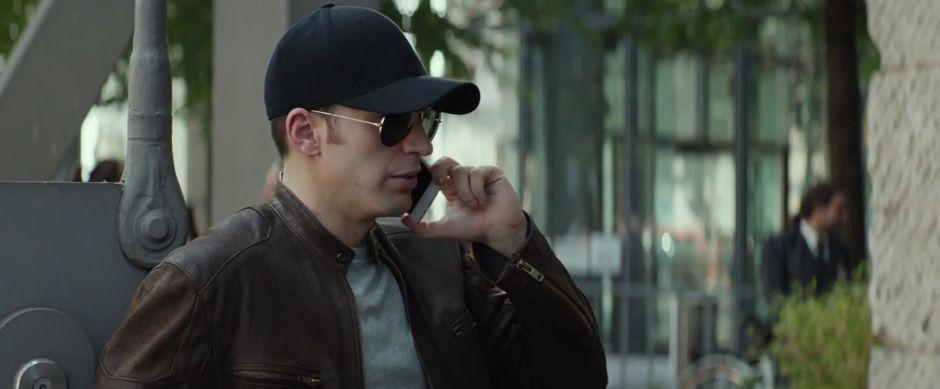As the grand machinations of the Marvel Cinematic Universe finally come to fruition with the release of Avengers: Infinity War, now is as good a time as any to look back on what the franchise has accomplished in the past decade. Welcome to the MCU Awards, in which Ringer staff members acknowledge the best moments, ponder lingering questions, and in some cases revisit things that they feel have been overshadowed by Thanos’s giant chin.
Best “Remember That?”: Edward Norton as the Incredible Hulk
Sean Fennessey: Lost to time and the overwhelming power of recasting, Norton was the second Hulk of the century—before current Hulk Mark Ruffalo but after Ang Lee’s Hulk Eric Bana—during a moment when Marvel believed it still needed known quantities to appear as the stars of its films. If Robert Downey Jr. was a calculated risk on a wayward star, Norton was slightly less leveraged: a celebrated actor five years removed from his last hit (The Italian Job) and perhaps questing for a big project. It … didn’t go well, and Louis Leterrier’s The Incredible Hulk—which, like Iron Man, turns 10 years old this summer—has become the most ignored product in Marvel Studios history. Norton is known for his desire to get involved at the deepest creative levels of his films, and he reportedly reworked the script on The Incredible Hulk with Leterrier—until Marvel effectively took the movie away from them and recut it. It’s the last time the studio experienced such a publicly known and tumultuous behind-the-scenes dustup, and also the last time a Marvel movie failed to earn at least $150 million at the box office. There’s something romantic about an actor as talented and precise as Norton making an MCU entry his own. But in Marvel’s shipbuilding empire, there isn’t much room for self-realization—only superstructure.
Most Underequipped: Black Widow
Danny Heifetz: Tony Stark has a dozen Iron Man suits, Thor has a mystical hammer, Captain America has a physics-altering shield, and Black Widow has … two pistols?

Natasha, is that really your chosen weapon against a demigod and his alien army? America has the biggest military budget in the world, yet our best spy doesn’t have Call of Duty create-a-class? Perhaps I shouldn’t complain. To be fair, in Captain America: Civil War, Black Widow’s two guns were replaced by two sticks.
Can you imagine fighting anyone with two tiny sticks? Hawkeye (HAWKEYE!) is better equipped than Black Widow. She might be better off empty-handed. It’s 2018. We’re seven thousand movies and nine trillion dollars into the Marvel Cinematic Universe. Let’s get Black Widow a better gun, or at least one big stick instead of two small sticks—preferably from Wakanda’s R&D lab.
Best Human Torch Redemption Tour: The MCU
Kate Halliwell: There’s nothing like watching a pre–Marvel Studios superhero movie to make you appreciate even the worst of the MCU. Chris Evans’s first superhero role, in 2005’s Fantastic Four, was a big deal—and Johnny Storm, a.k.a. the Human Torch, was a good match for his early fuckboy appeal—but the movie itself was terrible. Then came his 2010 casting as Steve Rogers (the anti-fuckboy), and a star was born, as well as the most successful string of films in recent blockbuster history.
Evans’s ascension became a model that would somehow be repeated: 10 years after the first failed attempt, the legendarily terrible Fantastic Four remake doomed Michael B. Jordan to the same fiery fate. But once again, Marvel was there to tend to the ashes, and MBJ was reborn as Killmonger in Black Panther and saved from superhero ignominy. Now Evans is stepping away from his iconic role, and Jordan is freshly primed for his next starring role. Next, I think Marvel should do something for Jessica Alba.
Best Appliance in Tony Stark’s Workshop: Dum-E
Miles Surrey: Let’s not forget about the, um, “humble” origins of the Marvel Cinematic Universe. Before a Norse god and a space raccoon joined the fray, the MCU began with a wealthy, Elon Musk–type dude building a robot suit. There were no super-powered sidekicks for Tony Stark—just a workshop of misfit appliances that, despite being made by an ostensible genius, never seemed to work.
Dum-E (actual, unfortunate name) got the brunt of Tony’s attitude, though it didn’t seem to mind. Like a robot suffering from Stockholm Syndrome, Dum-E was dutifully there to pick things up no matter what verbal abuse was hurled its way—also, because it was a literal robot arm. And while many Avengers have saved Tony’s skin, none of that would be possible if Dum-E didn’t save his life in the first Iron Man.

Two things, Tony: Don’t forget about the little guy now that you’ve got Super Friends, and be grateful Dum-E and the rest of your workshop bots didn’t join up with Ultron when they had the chance.
Best Totally Normal Civilian Who’s Definitely Not a Superhero: Captain America

[Int. Gap changing room — afternoon]
Steve Rogers: Now, let me just—
[Rogers puts on a nondescript, brown leather jacket]
Rogers: There! Don’t I look like a civilian?
Gap Employee: Um …
Rogers: What? What’s wrong? All civilians wear leather jackets.
Gap Employee: First of all, stop saying civilians. Normal people don’t say that word. Second of all, I can see your giant pecs through that shirt. Third of all you, have Captain America’s face.
Rogers: But I wear a mask—
Gap Employee: Half a mask.
Rogers: OK, fine. What if I put this hat on?
Gap Employee: Is that a logo-less hat? Where did you get that?
Rogers: Total civilian move, right?
Gap Employee: No! Have you been outside, ever? Normal people wear hats that have things on them. AND STOP SAYING CIVILIAN!!!
Rogers: [not listening] And then I’ll … yep, these aviator sunglasses are the cherry on top.
Gap Employee: …
Rogers: You don’t like them.
[Gap Employee sighs with profound exasperation]
Gap Employee: You look great, Capt—I mean, Steve. Not at all like a superhero in a blatant disguise.
Rogers: Perfect. Can I have six of everything?
[End Scene]
Only Spider-Man: Tom Holland
Virali Dave: When Spider-Man came out in 2002, Tobey Maguire was 26; in 2012’s The Amazing Spider-Man, Andrew Garfield was 28. It wasn’t until Spider-Man: Homecoming in 2017 that we were given an age-appropriate Peter Parker, in the 21-year-old Tom Holland. Holland’s the only Spider-Man who has been able to effectively communicate that the superhero is a freakin’ child. There’s a scene in Homecoming where he’s trapped under rubble, crying out for someone to save him, and he looks so helpless and so, so young. He’s the only Spider-Man who can make you understand that yes, with great power comes great responsibility, but also that teenagers should not have that much responsibility! He’s the only Spider-Man who can inspire the necessary amount of sympathy and emotional investment. And most importantly, he’s literally the only Spider-Man—Spider-Man and The Amazing Spider-Man are owned by Columbia Pictures, and therefore nonexistent in the current Marvel universe. We should act as though Tobey Maguire (truly the Chum Bucket of Spider-Men) and Andrew Garfield never put on the suit, which is fine by me.
Best Villain: Vulture
Chris Almeida: OK, I know, the consensus pick for this award is Erik Killmonger. But here’s the thing: Michael B. Jordan’s character peaked too early. After wearing an extremely cool denim jacket, dropping the movie’s best line, and besting T’Challa in single combat, the newly ascended Wakandan king ran into the problems that every superhero-film big bad grapples with at some point: He became the catalyst for a lot of CGI punching and explosions.
Michael Keaton’s Vulture, too, was involved in tiresome fight scenes, but not before being part of the best twist in MCU history. I have been present for more than my fair share of superhero movies, but I’d never heard an audience gasp during a screening until Peter Parker arrived at his prom date’s house, only to find that her father was his Bannonesque nemesis. The rest of that scene perfectly straddles the line between hilarious and terrifying: Peter nervously declining to put his arm around his date, Liz, and shoving the corsage into her hands while Vulture, unknowingly in his most menacing moment of the film, brandishes a kitchen knife.
On the way to the prom, a “dad talk” car ride serves as a more electric meeting of hero and foil than any climactic set piece in the MCU. Birdman forever.
Most Annoying but Necessary Character Evolution: Tony Stark
Michael Baumann: In the original Iron Man, Tony Stark was awesome until he got captured. He built ostentatious private jets complete with stripper poles, flaunted his wealth, grew outrageous facial hair, and was super-mean by proxy to Leslie Bibb the morning after the two of them slept together. He was perfect for that movie’s time, the salad days of Difficult Men. If Tony Stark had never changed, he’d have been another Gordon Gekko, Tyler Durden, or Don Draper, a super-cool hero to frat boys and College Republicans named Hunter—and their older brothers, who are all somehow stockbrokers named Brandon and semipro gamers who’ve forgotten their own first names. None of them would have realized Tony Stark isn’t exactly supposed to be the good guy, but none of them would have cared, because my man was cool as hell.
Then Tony was confronted with the human toll of his part in the war on terror, the lives his weapons destroyed, and that the problem with giving the U.S. military cool explosive toys is that they’ll sometimes treat weapons like toys. So he decided to stop making weapons, then decided to continue to make weapons, but only if they could be used as part of a secret and mostly unaccountable government agency that is run by a guy who wears a trenchcoat and an eye patch. And while he sometimes still did the cool playboy stuff, like enter the Monaco Grand Prix, it was not enough—the audience was left begging for the old, pure, uncut Stark.
But just as the original MCU Tony Stark was a character of his day, so too was the character Tony evolved into. To paraphrase Tony, “The problem isn’t our government’s massive and implacable military might, which projects itself around the world to justify its own existence, or the menacing surveillance state directed at its own citizens. The problem is that the wrong people are at the controls, and among the right people is a multibillionaire asshole whose standing in the world is 100 percent the result of inheriting a weapons company from his dad.” If that’s not a perfect avatar for the failings of the Obama administration, particularly its foreign policy, then I don’t know what is.
Look, could Tony Stark have been Iron Man if he hadn’t become a changed man? No, so from that standpoint it was necessary. But I liked the amoral playboy Tony Stark way more than the lukewarm self-contradiction he’s become: the official superhero of neoliberalism.
